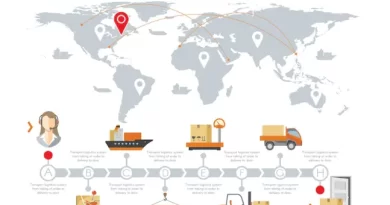6 Ways to Innovate and Make Your Online Business More Eco-Friendly
In recent years, the importance of environmental sustainability has become increasingly evident. As a business owner in the digital era, you have a unique opportunity to leverage technology and adopt eco-friendly practices that not only reduce your environmental footprint but also attract environmentally conscious customers.
Making your online business more eco-friendly not only benefits the planet but also contributes to your long-term success and positive brand image. In this blog post, we will explore seven innovative ways to make your online business more environmentally sustainable.
1. Embrace Renewable Energy
One of the most impactful steps you can take to make your online business more eco-friendly is to transition to renewable energy sources. By embracing solar power or wind energy, you can power your operations with clean, renewable energy. Installing solar panels on your premises is a long-term investment that not only reduces your reliance on fossil fuels but also helps you save on electricity costs over time.
Additionally, you can purchase renewable energy credits from wind farms or solar power plants to offset your energy consumption. By making this switch, you significantly decrease your carbon emissions and demonstrate your commitment to a sustainable future. Consider partnering with a renewable energy provider that specializes in working with businesses like yours.
They can help you assess your energy needs, determine the optimal solar or wind solution, and guide you through the installation process. Taking advantage of renewable energy grants or tax incentives in your region can also make the transition more financially viable.
2. Educate and Engage Your Customers
Empower your customers to make eco-friendly choices by providing them with information and resources. Create engaging content that highlights the environmental benefits of your products or services. Develop a sustainability section on your website where customers can find tips on reducing their carbon footprint. You can also partner with a carbon offset company that offers a browser extension designed to help online shoppers make their purchases more environmentally friendly.
Consider offering rewards or discounts to customers who choose eco-friendly options, such as opting for digital receipts or purchasing sustainable products. Encourage customer feedback and suggestions for further improving your environmental initiatives.
By actively involving your customers in your sustainability efforts, you create a sense of community and inspire positive change. Communicate your sustainability initiatives through various channels, including social media, blog posts, newsletters, and email campaigns.
Share success stories, feature eco-friendly products, and provide practical tips for a greener lifestyle. Consider partnering with environmental organizations or participating in environmental campaigns to amplify your message and reach a wider audience.

3. Optimize Packaging
To minimize waste and environmental impact, optimize your packaging materials and practices. Choose eco-friendly alternatives such as biodegradable or compostable packaging materials made from recycled or sustainably sourced materials. Additionally, consider lightweight packaging options to reduce shipping emissions and costs. Encourage customers to recycle or reuse packaging by including clear instructions and promoting eco-friendly practices on your website and in your order shipments.
Innovative packaging solutions are continuously emerging, such as biodegradable air cushions, mushroom-based packaging, and plant-based plastic alternatives. Research these options and experiment with different materials to find the most suitable and environmentally friendly packaging solutions for your products. Collaborating with packaging experts or sustainable packaging companies can provide valuable insights and ensure that your packaging aligns with eco-friendly goals.
4. Implement Sustainable Shipping Practices
Shipping is a critical aspect of any online business. To reduce your carbon footprint, collaborate with logistics providers that prioritize sustainability. Look for carriers that offer carbon-neutral shipping options or utilize alternative fuels like electric vehicles or biodiesel. Consolidate orders when possible to minimize transportation-related emissions. Additionally, leverage advanced analytics and route optimization tools to streamline your shipping routes, reducing fuel consumption and improving overall efficiency.
By implementing sustainable shipping practices, you contribute to a greener supply chain. When selecting shipping partners, consider their commitment to sustainability, their carbon emissions reduction initiatives, and their transparency in reporting their environmental impact.
Some logistics companies offer calculators that estimate the carbon emissions generated by shipping specific products to specific destinations, allowing you to provide customers with more transparent information about the environmental impact of their purchases.
5. Promote Virtual Meetings and Remote Work
In the digital age, virtual meetings and remote work have become increasingly common. Encourage your team and clients to embrace these practices to reduce the need for commuting and business travel. Utilize video conferencing tools, project management software, and collaboration platforms to facilitate seamless remote work environments. By reducing transportation-related emissions, you contribute to a greener future while also improving work-life balance and productivity.
Promote the environmental benefits of remote work and encourage your employees to incorporate eco-friendly practices into their daily routines.
In addition to promoting virtual meetings, consider organizing virtual conferences or webinars instead of physical events.
Virtual conferences not only save resources but also allow attendees from around the world to participate without the need for travel, reducing the carbon footprint associated with large-scale gatherings.
6. Measure and Communicate Your Impact
Lastly, it’s essential to measure and communicate your eco-friendly initiatives and their impact. Monitor and track your energy consumption, waste generation, and emissions to identify areas for improvement. Transparently share your sustainability goals and progress with your customers and stakeholders through your website, social media channels, and annual reports.
By showcasing your commitment to the environment, you build trust and loyalty with your audience while inspiring others to take action. Additionally, consider obtaining third-party certifications or joining sustainability initiatives to validate your environmental efforts further and enhance your credibility.
Utilize sustainability reporting frameworks such as the Global Reporting Initiative (GRI) or the Sustainability Accounting Standards Board (SASB) to structure and report your environmental impact data. These frameworks provide guidelines and standards for measuring and reporting sustainability performance. Consider sharing your sustainability achievements and challenges, and be transparent about your goals for continuous improvement.
Innovating and making your online business more eco-friendly is a win-win situation. By implementing these seven strategies – embracing renewable energy, optimizing packaging, implementing sustainable shipping practices, promoting remote work, practicing sustainable supply chain management, educating your customers, and measuring and communicating your impact – you can significantly reduce your environmental footprint, attract environmentally conscious customers, and enhance your brand image.
Let’s join hands to create a sustainable future where business success goes hand in hand with environmental stewardship. Together, we can make a difference.




